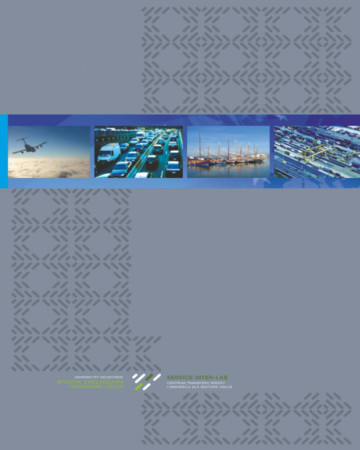
ISSN: 1644-275X
eISSN: 2353-3005
OAI
DOI: 10.18276/ptl.2016.36-07


Issue archive /
nr 4 (36) 2016
Proces wdrożenia planu mobilności dla obiektów generujących duży ruch
(Mobility Plan as a Tool for Traffic Generators. The Process of Implementation)
| Authors: |
Michał
Kuzia
Wydział Przedsiębiorczości i Towaroznawstwa, Akademia Morska w Gdyni |
| Keywords: | mobility plan traffic generators process of implementation |
| Data publikacji całości: | 2016 |
| Page range: | 8 (71-78) |
| Klasyfikacja JEL: | R41 |
Abstract
In response to growing transport problems and the deterioration of the quality of life, polish cities began to develop initiatives for sustainable transport development. Many of these activities relate to European projects, like: CIVITAS Initiative, SUMP or FLOW. As a supplement for these projects at the local level are mobility plans implemented for major traffic generators, such as: business and shopping centers, hospitals, universities, schools, offices, etc. The purpose of this article is to present a mobility plan as a tool for sustainable development of transport in urban areas, as well as to show the process of implementation of the mobility plan for institutions and enterprises. A well-prepared mobility plan is beneficial for the environment, employees, customers and it may ensure the financial savings in the long period of time. In western countries the matter of mobility plans is well-known since 2001. Unfortunately, knowledge of this issue in Poland is still low.
Download file
Article file
Bibliography
| 1. | Curtis, P., Mouncher, K. (2016). Delivering Personalised Travel Planning across Europe. Brussels: PTP-Cycle. |
| 2. | Department for Transport (2008). The Essential Guide to Travel Planning. Pobrane z: www.gov.uk/government/organisations/department-for-transport (5.07.2016). |
| 3. | Department of Transport (2012). Travel Smart to Work: A Workplace Travel Planning Guide. Pobrane z: http://www.transport.wa.gov.au (5.07.2016). |
| 4. | Department of Transport (2013). Travel Smart Workplace: Travel Plan Template. Small Workplaces. Pobrane z: http://www.transport.wa.gov.au (5.07.2016). |
| 5. | Kłos-Adamkiewicz, Z. (2014). Plan mobilności jako narzędzie realizacji zrównoważonego rozwoju transportu w miastach. Logistyka, 14 (2), 124–129. |
| 6. | Little, A. (2011). The Future of Urban Mobility. Pobrane z: http://www.adl.com/urban_mobility (5.07.2016). |
| 7. | Nosal, K. (2010a). Przykłady planów mobilności i ocena ich skuteczności. Transport Miejski i Regionalny, 11 (1), 31–35. |
| 8. | Nosal, K. (2010b). Zintegrowany plan mobilności dla Politechniki Krakowskiej – pierwszy plan mobilności w Polsce. Pobrane z: http://siskom.waw.pl/nauka/konferencje/20100608/13 (5.07.2016). |
| 9. | Nosal, K., Starowicz, W. (2010). Wybrane zagadnienia zarządzania mobilnością. Transport Miejski i Regionalny, 10 (3), 26–31. |
| 10. | Shaheen, S., Guzman, S., Zhang, H. (2010). Bikesharing in Europe, the Americas, and Asia. Washington: The National Academies of Sciences, Engineering, and Medicine. |
| 11. | Smid, P., Lukesova, P., Mourek, D. (2011). Plany mobilności. Kraków: Fundacja Partnerstwo dla Środowiska. |
| 12. | Wołek, M., Wyszomirski, O. (2012). Nowe kierunki planowania transportu w świetle doświadczeń projektu ELTIS+. Pobrane z: http://www.sape.org.pl/doc/6_Nowe_kierunki_planowania_transportu_w_swietle_doswiadczen.pdf (5.07.2016). |